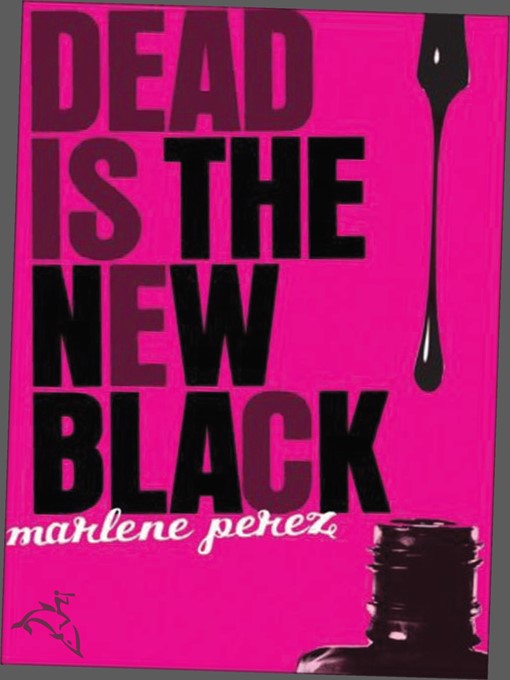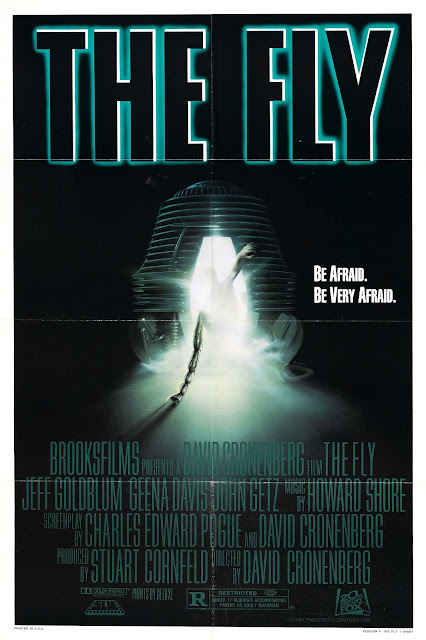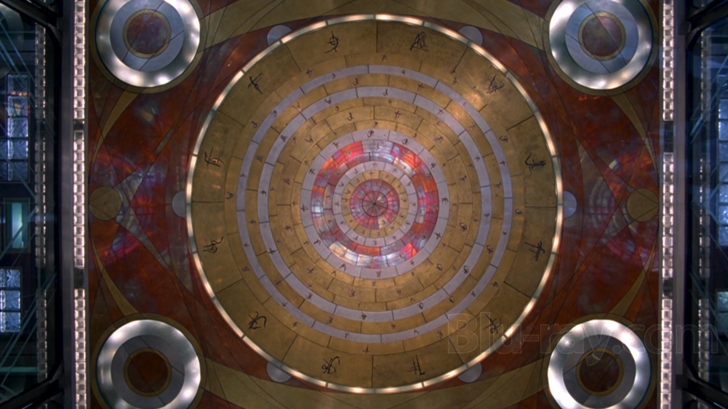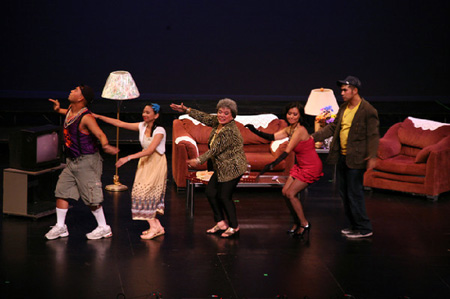The Theory:
Romanticism (or the Romantic era/Period) was an artistic, literary, and intellectual movement that originated in Europe toward the end of the 18th century and in most areas was at its peak in the approximate period from 1800 to 1840. Partly a reaction to the Industrial Revolution, it was also a revolt against aristocratic social and political norms of the Age of Enlightenment and a reaction against the scientific rationalization of nature. It was embodied most strongly in the visual arts, music, and literature, but had a major impact on historiography, education and the natural sciences. Its effect on politics was considerable and complex; while for much of the peak Romantic period it was associated with liberalism and radicalism, in the long term its effect on the growth of nationalism was probably more significant.
The movement validated strong emotion as an authentic source of aesthetic experience, placing new emphasis on such emotions asapprehension, horror and terror, and awe—especially that which is experienced in confronting the sublimity of untamed nature and its picturesque qualities, both new aesthetic categories. It elevated folk art and ancient custom to something noble, made spontaneity a desirable characteristic (as in the musical impromptu), and argued for a "natural" epistemology of human activities as conditioned by nature in the form of language and customary usage. Romanticism reached beyond the rational and Classicist ideal models to elevate a revived medievalism and elements of art and narrative perceived to be authentically medieval in an attempt to escape the confines of population growth, urban sprawl, and industrialism, and it also attempted to embrace the exotic, unfamiliar, and distant in modes more authentic than Rococo chinoiserie, harnessing the power of the imagination to envision and to escape.
(courtesy of: http://en.wikipedia.org/wiki/Romanticism)
The Story:
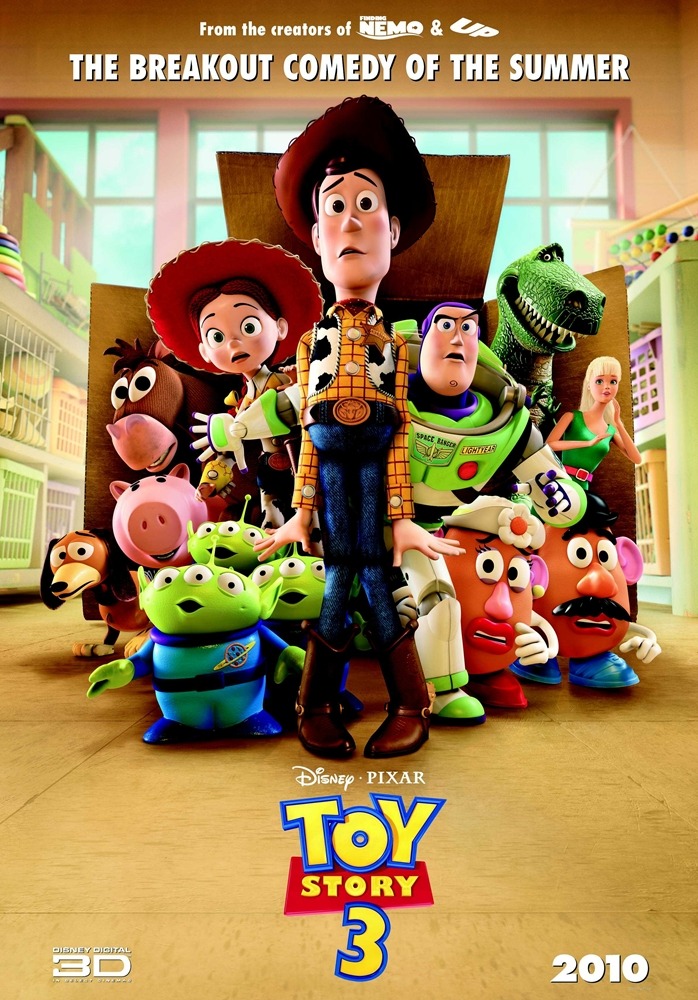 |
| courtesy of: http://cfile2.uf.tistory.com/image/1206401E4C5B3E0C1EC762 |
Andy, now nearly 18 years old, is leaving for college, and his toys feel like they have been abandoned as they have not been played with for years. Andy decides to take Woody with him to college and puts Buzz Lightyear and the rest of the toys in a trash bag for storage in the attic. However, the toys are accidentally thrown out when Andy's mother finds the bag and puts it out on the curb, causing the toys to think that they are no longer wanted. They escape and decide to climb in a donation box for Sunnyside Daycare. Woody, the only toy who saw what actually happened, follows the other toys and tries to explain that they were thrown out by mistake, but they refuse to believe him.
Andy's toys are welcomed by the many toys at Sunnyside and given a tour of the seemingly perfect play-setting by Lots-O'-Huggin' Bear (simply known as Lotso), Big Baby and Ken, whom Barbie falls for. All of the toys love their new home, leaving a steadfast Woody alone in an attempt to return to Andy. Woody's escape attempt falls short and he is found outside by Bonnie, an imaginative little girl. She takes him home and plays with him along with her other toys, who are well-treated, happy, and readily welcome Woody. At the daycare, Andy's toys are getting played with very roughly by the rambunctious youngest toddlers.
Buzz goes to ask Lotso to transport him and the other toys to a better room, only to be caught by Lotso's henchmen and restored back to his original space ranger persona. At the same time, Andy's toys realize that Woody was right about Andy when Mrs. Potato Head sees Andy searching for them through her missing eye, which was left behind in Andy's room. Before they could leave, they are imprisoned by Lotso and his gang, including a reset Buzz. Back at Bonnie's, Woody learns from one of the toys, named Chuckles the Clown, that Lotso was once a good toy and had an owner named Daisy who also owned Chuckles the Clown and Big Baby. One day, Daisy left them behind on a picnic. The three eventually find their way back to Daisy's house, only to find that she replaced Lotso with an identical teddy bear. When he found Sunnyside, he and Big Baby took it over and ran it like a prison.
The following morning, Woody returns to Sunnyside through Bonnie's backpack and reunites with his friends. That night, the toys execute a daring escape plan, and in the process they accidentally reset Buzz into a delusional Spanish mode, in which his memory remains wiped but he becomes flamboyantly chivalrous; despite this, Buzz allies himself with Woody and immediately falls in love with Jessie. The toys reach a dumpster, but are caught by Lotso and his gang. As a garbage truck approaches, Woody reveals what he learned about Lotso, and Big Baby throws Lotso into the dumpster. Seeking revenge, Lotso pulls Woody into the dumpster just as the truck collects the trash. Woody's friends fall into the back of the truck trying to rescue him and a falling television hits Buzz when he tries to save Jessie, returning him to his normal self. The toys find themselves at the dump and eventually wind up on a conveyor belt leading to a giant incinerator. Woody and Buzz then help Lotso — whom they saved earlier — reach an emergency stop button, only to have Lotso leave them behind. Believing the end is near, the toys join hands and accept their fate, but are soon rescued by the Aliens operating a large industrial claw. Lotso makes his way outside, but a passing garbage truck driver finds him and, recognizing he had the same toy as a kid, straps him to the radiator grill of his truck. Meanwhile, Woody and his friends board another trash truck driven by an older Sid Phillips back to Andy's house.
In Andy's room, Woody climbs back into the box with Andy's college supplies while the other toys ready themselves for the attic. Woody suddenly has an idea and leaves a note for Andy on the toys' box. Andy, thinking the note is from his mother, takes them to Bonnie's house and introduces her to his old toys. Bonnie recognizes Woody who, to Andy's surprise, is lying at the bottom of the box. Though initially reluctant, Andy happily passes him on to Bonnie, and then spends some time playing with her and the toys before leaving. The film ends with Woody and his friends watching Andy's departure and beginning their new lives with Bonnie.
During the credits, Woody and the other toys learn through notes passed on in Bonnie's backpack that Barbie, Ken and Big Baby have improved the lives of the toys (now including an Emperor Zurg action figure) at Sunnyside. Buzz and Jessie (now a couple) then dance a pasodoble to a Spanish version of "You've Got a Friend in Me."
(courtesy of: http://en.wikipedia.org/wiki/Toy_Story_3)
The Criticism:
Toy Story 3 centers on the adventures of Andy’s toys as they are packed up in preparation for Andy going away for college, and mistakenly end up, instead of the attic, in Sunnyside Day Care Center.
The film effectively relates the audience to the characters by giving each toy a distinct human personality. By having the toys deal with issues comparable to highly-sensitive topics faced by ordinary people such as the threat of being stuck in the day care center ruled by a tyrannical stuffed bear (the fear of being under the power of someone abusive of the authority) and the incorrect thought of Andy throwing them away (the fear of not being given love and care), the film is able to submerge the viewers into a pool of various emotions. Some scenes attempt to enlighten the viewers upon much more sensitive issues such as the incinerator scene (the fear of death) and the scene where Andy leaves his toys under Bonnie’s care (the feeling of uncertainty). The scenes were meticulously planned, constructed and animated to elicit strong feelings of nostalgia, joy, sadness, anger, and loneliness. The movie particularly scores well with me. It holds up to re-watches, and with each viewing, I am always left teary-eyed, if not crying. The characters have been through so much hardships, from being almost blown to smithereens, to being transported to Japan, to being stuck in a day care center for who knows how long, to almost being incinerated; Andy’s sudden choice to donate them to Bonnie instead of taking them up to the attic is somewhat unbelievable, but once the audience realizes that their new owner will take care of them, a wave of emotions comes flooding the viewers. With such high expectations for the closure of the trilogy, Toy Story 3 still managed to amaze and entertain, making this easily the best out of the three.
